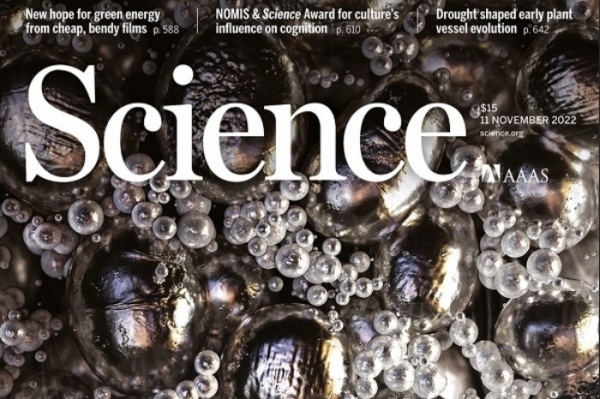Research & Development
KAIST invents world's 1st rubber-like printed circuit board
The breakthrough is expected to greatly boost wearable devices
By Nov 15, 2022 (Gmt+09:00)
1
Min read
Most Read
LG Chem to sell water filter business to Glenwood PE for $692 million


KT&G eyes overseas M&A after rejecting activist fund's offer


Kyobo Life poised to buy Japan’s SBI Group-owned savings bank


StockX in merger talks with Naver’s online reseller Kream


Meritz backs half of ex-manager’s $210 mn hedge fund



South Korea's top science and technology university has invented the world's first printed circuit board (PCB) that bends and stretches like rubber but with no change in electrical resistance, a development expected to have a huge effect on devices worn by people.
The Korea Advanced Institute of Science and Technology, aka KAIST, on Monday said a research team led by new materials engineering professor Kang Ji-hyeong developed a method of making a liquid metal particle network to create a flexible PCB.
Liquid metal is metal in liquid form at room temperature like mercury that boasts high electrical conductivity and transformation capacity. Because of the structure's instability due to the nature of the liquid state, however, liquid metal has faced limits in being used in PCB wiring.
The team developed a technology using ultrasonic waves to combine liquid metal particles with highly elastic materials. Gallium, a metal that turns into liquid at 29.8 degrees Celsius, was closely bonded with highly elastic polyurethane particles using the waves.
The result was a PCB with low electrical resistance like that of copper but no change in properties even when stretched 10 times its original shape.
"We used a method based on ultrasonic waves to prevent leaks of liquid metal and thus achieved high bonding strength with an array of electronic components," Kang said.
A thesis summarizing the related content was published on Nov. 11 on the cover of the global academic journal Science.
Through cutting-edge technologies, the team connected electronic components and PCBs, produced elastic displays and sensors to gauge optical blood flow, and presented a range of applications.
Write to Jin-Won Kim at jin1@hankyung.com
More to Read
-
 Tech, Media & TelecomHansol Group, KAIST to launch new tech, AI research center
Tech, Media & TelecomHansol Group, KAIST to launch new tech, AI research centerOct 13, 2022 (Gmt+09:00)
1 Min read -
 Business & PoliticsKAIST, NYU to operate joint campus in New York City from 2023
Business & PoliticsKAIST, NYU to operate joint campus in New York City from 2023Sep 22, 2022 (Gmt+09:00)
2 Min read -
 Artificial intelligenceKAIST develops brain-like, large-scale memory system
Artificial intelligenceKAIST develops brain-like, large-scale memory systemJun 08, 2022 (Gmt+09:00)
2 Min read
Comment 0
LOG IN


